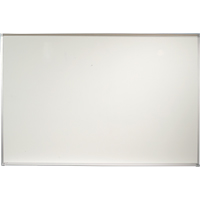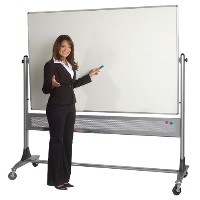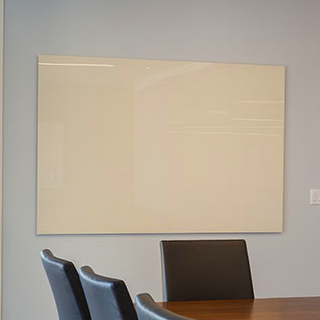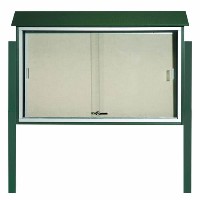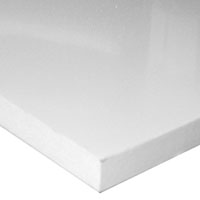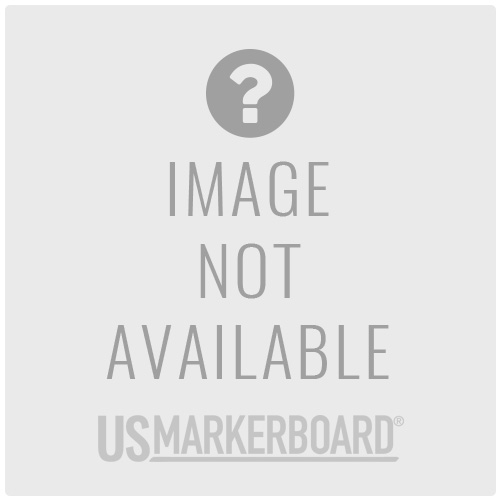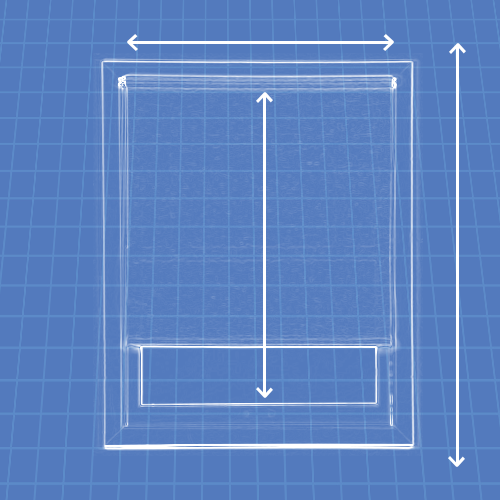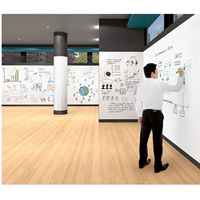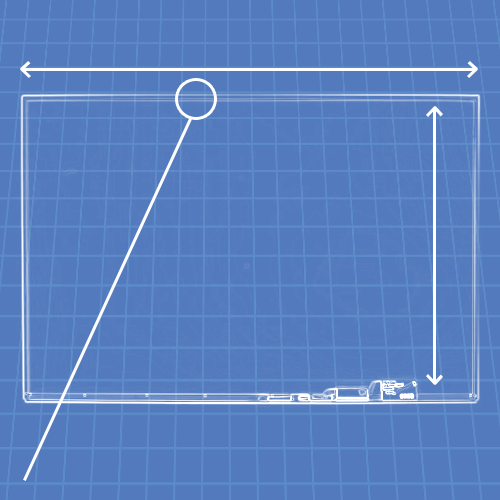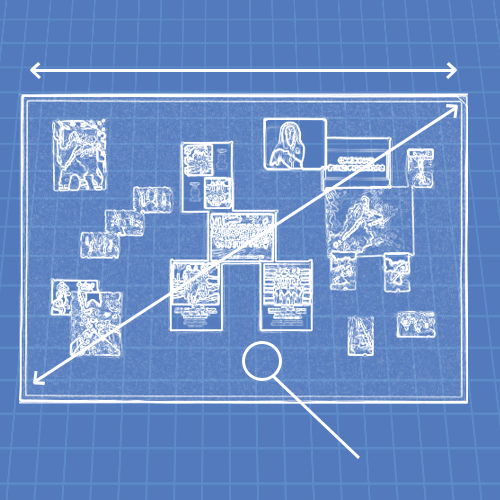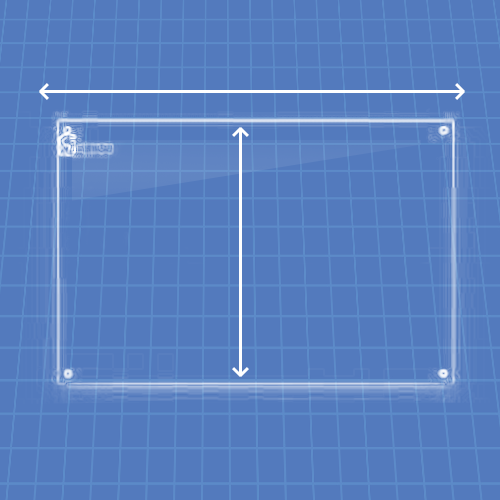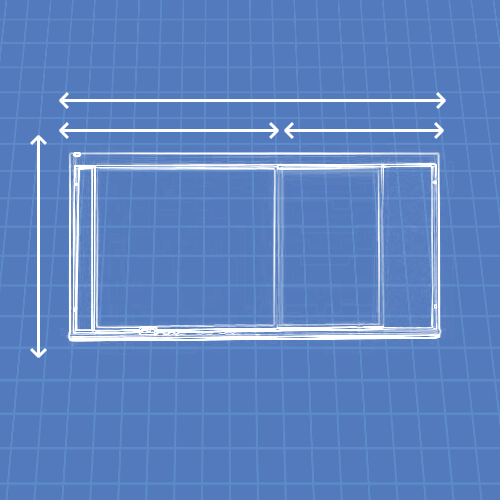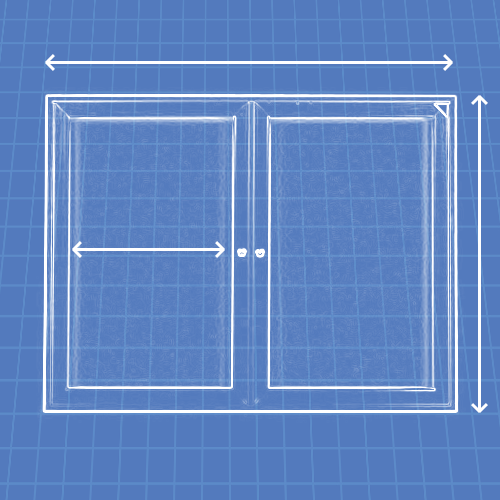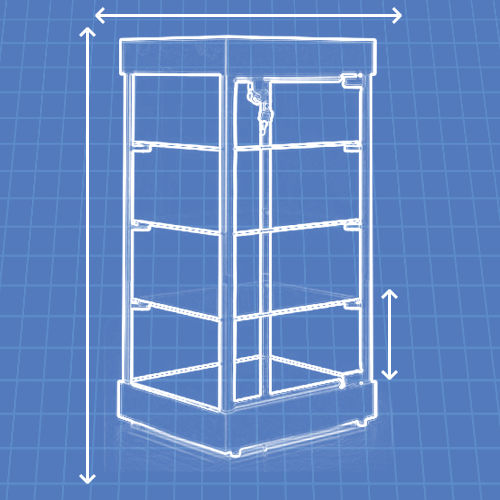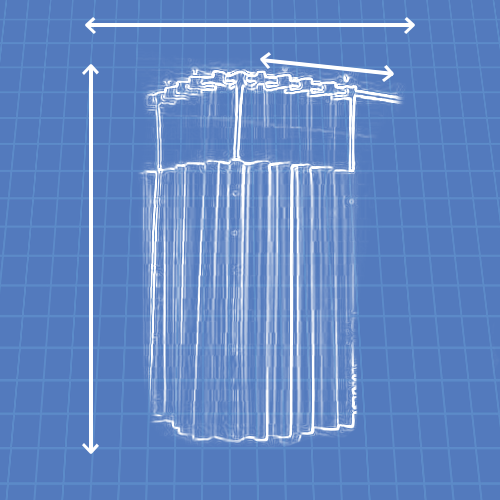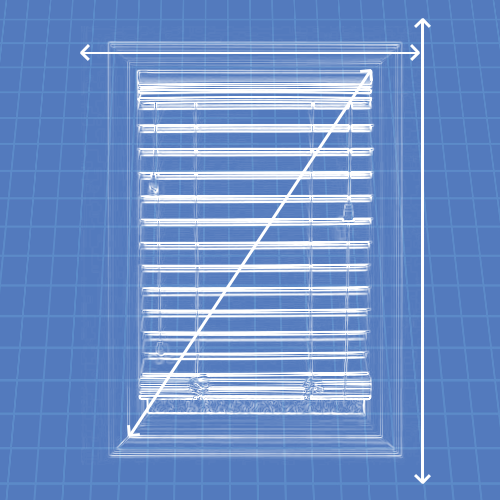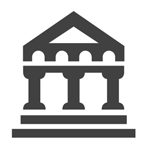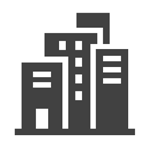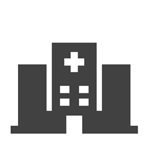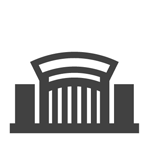Click the question to see its answer
Got a question you don't see here? Contact Us with your question.
-
What size Projection Screen do I need?
The following information has been provided by Da-Lite.
The rule of thumb is to fit the projection screen to the audience and not the projector.
Da-Lite recommends the following formula for determining projection screens size:
Screen height should be approximately equal to 1/6 the distance from the screen to the last row of seats, allowing text to be read and detail to be seen in the projected image.
The bottom of the screen should be a minimum of 4 feet above the audience floor, allowing those seated toward the rear of the audience to see the screen. This may require additional screen 'drop' (material height) for ceiling mounted screens.
Note: Please use this information as a base point from which to choose the right screen height. We generally find that most customers prefer 3 feet off the finished floor to the bottom of the screen, and some screens are not necessarily installed all the way to the ceiling.
Please call us with any questions. We are here to help you choose the right projection screen for your application.
-
What Projection Screen Surface do I need?
The following information has been provided by Da-Lite.
Da-Lite offers a wide array of projection screens each with a choice of projection surfaces. Selecting the right combination to meet your needs is important for optimum results.
The following offer guidelines for selecting a screen that suits your application. Although these recommendations will work in most situations, each must be looked at not as a strict rule, but rather as a guideline for determining your actual needs based on your own situation.
- Matte White : The most versatile screen surface and the premier choice when ambient light is controllable. It evenly distributes the light over a wide viewing area while colors remain bright and life-like, with no shifts in hue. Screen surface can be cleaned, is flame retardant, and mildew resistant. The image is brightest within 50-degrees of the center axis.
- Video Spectra 1.5 : Especially designed for demanding video and overhead LCD projection applications where a balance of higher gain and greater viewing angle is required. The special pearlescent surface may be cleaned with mild soap and water. The screen material is flame retardant and mildew resistant. The image is brightest within 35-degrees of the center axis.
- Glass Beaded : This surface has the ability to achieve a higher gain by reflecting more of the projected image back along the projection axis. Glass beads impregnated into the screen's surface provide additional reflectance. This attribute creates an unparalleled screen surface that reproduces vibrant life-like color at moderate viewing angles. The image is brightest within 30-degrees of the center axis.
- High Power : A technological breakthrough, combines the reflectivity of a glass beaded surface with the ability to clean the surface when required. It's smooth surface offers the highest gain of all types of screen surfaces with moderate viewing angle. The screen is flame retardant and mildew resistant. The image is brightest within 25-degrees of the center axis.
- Wide Power : Wide Power combines the features of a higher gain screen surface, with a wider degree viewing angle. The smooth acrylic surface may be cleaned with mild soap and water. Wide Power is only available in the Deluxe Insta-Theatre screen line. Screen material is flame retardant and mildew resistant. The image is brightest within 45-degrees of the center axis.
- Da-Mat : A smooth, white vinyl finish surface for precise image reproduction. Provides an exceptionally wide angle of view with little loss of resolution. It is a highly flexible unsupported vinyl fabric and may be folded or rolled. The screen material is flame retardant and mildew resistant. The image is brightest within 50-degrees of the center axis.
- Cinema Vision : A unique unsupported vinyl surface that offers a bright, uniform image with no color shift no matter at what angle you view the image. The screen material can be cleaned, is mildew resistant and flame retardant. The image is brightest within 45-degrees of the center axis.
- Pearlescent : This screen surface is provides high reflectivity and brilliance without loss of image quality or resolution. The screen material can be cleaned, is mildew resistant and flame retardant. The image is brightest within 35-degrees of the center axis.
-
How do I clean my Whiteboard?
The manufacturer has provided suggested maintenance and cleaning tips for your porcelain magnetic, New-Rite®, and melamine non-magnetic whiteboards. These tips will be included and shipped with your board.
Generally you should follow these general maintenance and cleaning tips:
- Only use manufacturer suggested dry-erase markers on your whiteboards, not permanent markers or pens.
- Erase board after each day's use, if your board is used daily, the cleaning should be performed at least 2 to 3 times a week.
- Allow ink to dry, waiting 8-10 seconds before erasing. If erased while still damp, it may smear or "ghost".
View All Board Cleaners, Markers, Erasers, and Accessories
Melamine Non-Magnetic Whiteboard
Cleaning: It is necessary to clean your melamine board prior to use. Clean board thoroughly with a formulated board cleaner (a glass cleaner may also be used). Simply spray the surface with the cleaner and wipe with a clean soft cloth. It is suggested that the board be periodically cleaned.
This unit is not recommended for use on damp walls or in high moisture areas.
Important - Do not use this board until you have read these instructions.
Caution: It is advisable to erase board after each day's use. If ink is left on the board for several days, the ink will set and it may be difficult to erase. If there is any ink on the board that will not erase, the cleaning procedures outlined above will remove the ink.
New-Rite® Whiteboard
Before using writing surface:
Clean New-Rite® surface thoroughly with a non-abrasive household cleaner, such as glass cleaner. Once cleaned, completely rinse the surface with clean water. The water rinse will remove and residue left behind by the cleaning agent. Dry with a clean, soft cloth.
Important Maintenance:
Markers: Use Expo dry erase markers for optimal results.
Erasing: Remove dry-erase markings with a felt eraser for longer lasting surface effectiveness. Press firmly when erasing, using circular motion. Change erasers when they become dirty. Dirty erasers will leave ink residue on the surface.
Daily Cleaning: For daily cleaning, rinse the New-Rite® surface with water. This may be done with a soft cloth or sponge. Dry the surface with a soft cloth.
Ghosting: If using low odor dry-erase markers, additional cleaning with water and soft cloth may be required. If ghosting (any faint remnant of marker left on surface after dry-erasing) occurs, wipe the board with a soft cloth dampened with water.
Hard to remove marker: If cleaning New-Rite® with a soft cloth and water will not remove marks, use a formulated board cleaner. Once the material is clean, rinse the surface with water and dry with a soft cloth.
Stubborn Stains: For stubborn stains, you may use a paint/stain remover such as Goof Off. Apply to a soft cloth, blot and/or rub gently over the stained area. After the stain has been removed, rinse with clean water and dry with a soft cloth. Follow the paint/stain remover manufacturers precautions before using.
CAUTION:
Do NOT use ball point pens or other sharp pointed instruments on the dry-erase surface.
Do NOT use abrasive cleaners on the dry erase surface.
Porcelain Steel Magnetic Whiteboard
Has the customer checked to see if the plastic has been removed from the surface of the board? Usually, the plastic is removed prior to the board being shipped. On rare occasions, the board may be shipped with this plastic in place.
- For the initial cleaning, wipe your board with a clean cloth moistened by a liquid cleaner.
- Rinse with clear water. This step is simple but very important.
- Wipe dry with a clean cloth.
- If your board is used daily, the cleaning should be performed at least 2 to 3 times a week.
- More thorough cleaning may be required if writing is left on the board for more than 2 days.
- Allow marker to dry 8-10 seconds before erasing. If erased while still damp, it may smear or "ghost".
What surface is the board?
HPL or porcelain enameled steel? Each surface will be cleaned in a different manner. The following cleaning suggestions refer to a porcelain enamel steel surface. If an HPL board, refer to HPL Care sheet.
How often are the boards cleaned?If the boards receive heavy usage during the day, they may need to be cleaned during the day to prevent/eliminate erasability issues.
In what type of classroom is the board located? Reading, Math, etc.
Math classrooms usually receive the most activity and may require cleanings throughout the day.
What is used to clean the board?
For example: whiteboard cleaners, chemicals, etc. This is important as chemicals may compromise the whiteboard surface. Ask for name of cleaning product used.
Removing Permanent Marker
- Moisten a clean, dry cloth with isopropyl alcohol. Use less alcohol for chalkboards.
- Wipe the board in a circular motion to loosen marker residue.
- Rinse with clear water.
- Dry the board with a clean cloth.
- Repeat these steps as often as necessary to remove all residue.
Removing Crayon and Tape
- Dampen a clean, dry cloth with water.
- Sprinkle a small amount of powdered cleanser onto the cloth; we recommend using Bar Keeper's Friend.
- Begin cleaning a small, manageable area using a back and forth horizontal motion. Use normal pressure as if you were cleaning a window. Wipe of all residue with a dry cloth.
- Rinse well with clear water. Please note that rinsing and drying steps are very important.
- Wipe dry with a clean cloth.
- Follow the same procedure for the remainder of the board.
Erasability / ghosting issues? It is usually due to the following reasons:
- Using the incorrect type of marker.
- Dirty erasers.
- Wet erasing.
- Heavy board usage without cleaning frequently enough.
Questions to ask the end-user to assist you in determining the problem:
Using the incorrect type of marker. What types of markers are used?
There are three types of markers: alcohol, ketone and water-based. Alcohol and ketone-based markers are used for use on porcelain steel surfaces. Water-based markers will bubble and smear in porcelain steel surface, resulting in buildup.
Wet Erasing - Was marker ink dry before board was erased?
Wet-erasing, erasing the ink prior to drying, smears the ink on the whiteboard. Smearing the ink can lead to a buildup on the board surface. Build up can lead to erasability issues.
Dirty Erasers - Are the erasers/cloth dirty?
Dirty erasers/cloth don not clean the board, they just push the dry erase material around on the surface- creating erasability issues. It is important to properly clean erasers and/or cloth before using to clean whiteboard.
Heavy board usage without cleaning frequently enough
In order to keep your whiteboard in top condition, it is important to properly clean the board based on usage.
Solutions... How to restore writing surface
There are three options to suggest when addressing the erasability issues. They are listed in recommended order.
- Use a formulated board cleaner, according to directions, to clean board. Suggest this solution first.
- Use 50% water / 50% alcohol wash on the board followed by a clear water rinse. The clear water rinse is the most important part of the cleaning process. The customer needs to clean the film off the surface and the clear water rinse brings the surface back to its original qualities with no chemicals or build up on the surface. If this doesn't solve problem, suggest next step - Bar Keeper's Friend.
- Use Bar Keeper's Friend (found at local grocery and hardware stores). Bar Keepers Friend is the manufacturer recommended cleaner for the porcelain enameled steel surface.
After a good cleaning and clear water rinse, how many days before the customer experienced erasability issues?
If customer experiences erasability issues the day after cleaning the board as described above, it is likely that the board is receiving heavy usage and will need to be cleaned more than once a day.
If customer can go more than one day before experiencing erasability issues after cleaning board as described above, cleaning the board will probably be sufficient.
The end-user is the best judge of how often the board should be cleaned based on usage.
-
Which Whiteboard Surface do I need?
Whiteboards - The Difference in Writing Surfaces is Clear
I am often asked about the difference in writing surfaces of whiteboards - porcelain, high-pressure laminate, and melamine.
Porcelain
Porcelain is by far the best writing surface available. It generally comes with at least a fifty-year warranty on the writing surface and can withstand the day-to-day use of a classroom or conference room. The surface is enameled sheet metal so it accepts magnets and because it is a non-porous material, the ghosting is minimal and can most often be cleaned with a proper cleaning solution.Laminate
High-pressure laminate is a bit newer to the whiteboard scene. It is made of the same process as Formica or the laminate top you would use for kitchen counter tops. It is a very durable surface, but it can scratch. The surface is not metal and therefore cannot accept magnets. However, the ghosting is minimal and it is a good alternative to porcelain when a less expensive alternative is preferred.Melamine
Melamine is often found on smaller, more light-duty use boards. It is often found in offices, home offices and dorm rooms. It is perfect for areas that are not used daily and where the writing is going to be cleaned off after every use. Writings left on the board will most like seep into the pours of the board and ghost the surface. Once this happens you will be unable to get the ghosting off and will need to replace the board if the ghosting bothers you.
When purchasing a whiteboard it is important to keep in mind what your uses are, what kind of life you are expecting to get out of your board and how large of a board you will need.
Contact one of the knowledgeable reps from Canada Whiteboard Co. with any questions on whiteboards.
-
What are Whiteboards made of?
Porcelain-On-Steel Magnetic Whiteboards are comprised of four parts:
- The liquefied enameled writing surface
- The backing (substrate)
- The foil backer (moisture barrier)
- The frame
The writing surface, often referred to as "Porcelain on Steel", "Ceramic Steel" or "Magnetic", is formulated into a frit (porcelain surface) by combining cobalt, nickel and glass and heated at very high temperatures. These products together are applied to a very high grade of steel sheeting and heated to over 1700 degrees Fahrenheit.
The porcelain writing surface (often referred to as the skin) is finished in large coil form and shipped to whiteboard manufacturers.
Once at the manufacturer, the coils of porcelain are put into a cutting machine where it is cut into the required size and laminated with hot glue to the backing. The backing can be made up of a number of different surfaces including fiberboard, hardboard, medium density fiberboard or particleboard. Once laminated the boards are stacked on top of each other to keep constant pressure while the glue cures. Once the curing process is over, the boards are framed, packaged and shipped all over the world.
The finished product is what we see in today's classrooms, conference rooms, offices and training rooms.
-
What is the history behind a Whiteboard?
As many people know from their childhood, most classrooms consisted of a large black or green chalkboard and green colored tacking surface next to it. Every day one or two lucky children would be asked to stay late and beat the chalk out of the erasers. We later found out that this wasn't such a great idea.
The big change began around 1994-1995.
I became ever so apparent that chalk dust was not good for computers. So, at the same time computers were finding their way into schools, whiteboards and dry erase boards began taking the place of the everlasting chalkboard. Chalk creates airborne particles that can easily find it's way into mainframes, monitors and keyboards. This did not bode well for the chalkboard.
The first whiteboard was a melamine or enameled hardboard surface. It was the "perfect" solution to the chalkboard, except that it ghosted in a short time and was not easy to keep clean.
The first porcelain-on-steel write-on/ wipe-off magnetic whiteboard, is believed to have been created by Claridge Products. It is appropriately named Liquid Chalk Surface or LCS, which they still use today.
Over the last 10 years, the Porcelain-on-Steel Magnetic Whiteboard has gone through many transformations, most of which are not visible to the naked eye. The surface has gotten much easier to clean. The glare has been reduced. And the cost for the product has become much more affordable.
Whether it is new construction or replacement of existing chalkboards the magnetic whiteboard is by far the most popular product used in companies and schools today.

